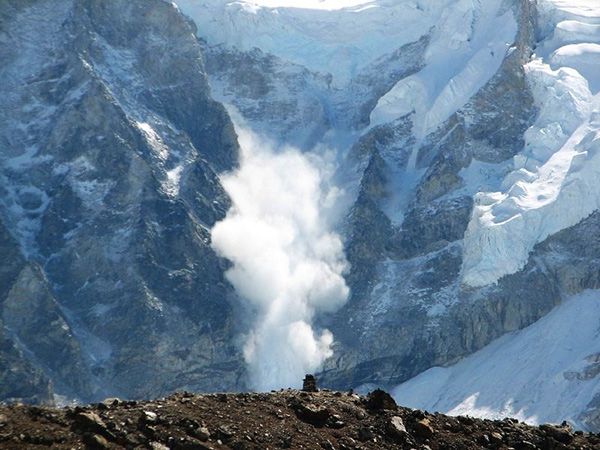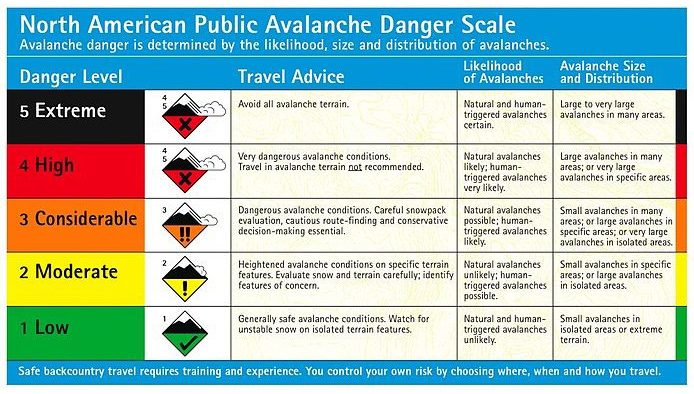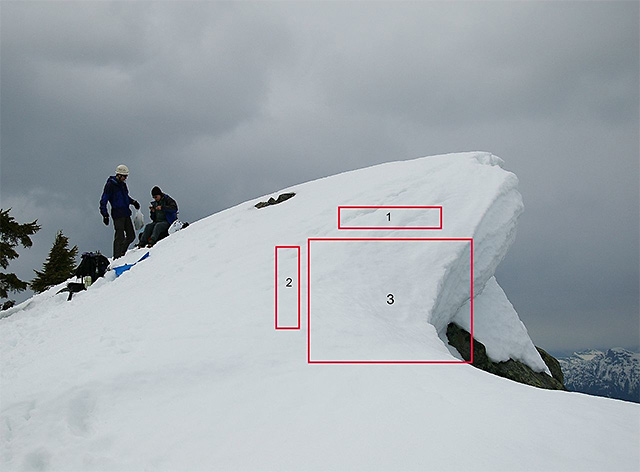
There are over 1 million avalanches every year, but they kill only 150 people.
So, while it’s very unlikely you’ll get caught in one, here are a few safety tips, just in case.
Avalanches happen when a slab of unstable snow breaks off from the layers beneath it. If you’re on top of that slab when it happens, ski or run for the sides.
Same thing if you’re in its path. Avalanches can reach 80 miles an hour in 5 seconds, and top 120 miles an hour. You won’t be able to outrun it, so head for the sides to get out of the way.
If you do get caught in it, swim against the snow to try to stay on top. Humans are heavier than the moving snow, so we tend to sink into it.
When the avalanche stops, there will be a brief period when the snow is still loose. If you’re disoriented, spit. That’ll tell you which way is down. Then try to dig your way up and out.
If you can’t, carve a breathing space, as large and as quickly as you can.
The weight of the snow will soon compress and harden it, restricting your movement. Try to remain calm, to conserve your energy and your oxygen.
The most important tip is to be prepared before you head into the mountains. Take an avalanche beacon, which can transmit a signal to rescuers.
Let friends know where you’re going. And check with local authorities to avoid avalanche areas in the first place.
Because the best way to survive an avalanche is to not get caught in one.
Background

Synopsis: Avalanches are one of the worst natural hazards in snowy mountainous regions of the world. Every year snowslides kill more than 150 people and cause significant infrastructure damage worldwide. How can you avoid—or survive—avalanches?
- Avalanches, a seasonal danger in the mountains, happen when a slab of snow detaches along a weaker layer and slides down a steep slope.
- Small avalanches may only run for a few feet, but larger avalanches can run for 1,000 yards (1 km) or more.
- The starting point of avalanches usually occurs on slopes of 30–45 degrees. New snow or human activity may overload the snowpack. Earthquakes or explosives may also trigger instability.
- Weak layers in a snowpack form as weather changes. Rainy events, hard freezes, and even daily temperature changes can alter the snow to create a weak layer.
- The most common time for avalanches is during and within 24 hr of a storm that drops more than 12 inches (30 cm) of fresh snow, overloading older snow and detaching slabs along preexisting surfaces.
- The direction a slope faces, its steepness, and even its vegetation may influence avalanche danger.
- The avalanche develops internal surges of different velocities as it grows by entraining surrounding snow, then accelerates rapidly along its track. Within 5 seconds, the mass of snow can reach up to 80 mph (130 kph); speeds may ultimately surpass 125 mph (200 kph).
- If it is moving fast enough, the snow may mix with air to form a blinding powder-snow avalanche cloud that hugs the ground surface—a gravity flow.
- When the avalanche eventually loses momentum, it stops in the runout zone, typically when the slope is 20 degrees or less.
- Researchers study the history and mechanics of avalanche development to mitigate the risk of living and playing in avalanche-prone areas.
- The most important approach uses hazard zones to ensure that infrastructure is not built in high avalanche risk zones.
- Snow nets and snow fences help to direct snow accumulation, while avalanche dams, earth mounds, or roadway snow sheds may be built to divert avalanches and protect infrastructure.
- Grooming ski slopes to stabilize the snowpack and using explosives to cause smaller avalanches and decrease overburden are typical measures at ski resorts.
- Forecasting warns people about avalanche threat levels using a recognizable Public Avalanche Danger Scale.

- Even with safeguards, people are still caught up in avalanches, where they can die of suffocation, hypothermia, or traumatic injuries. What can you do to survive an avalanche?
- If you are going out into big powder, take an avalanche beacon—a small radio that will transmit your location to rescue crews.
- If you are caught up in a slide, do whatever you can to get off the slab; ski or snowboard off to the left or right of the avalanche path—you won’t be able to outrun it.
- If you can’t get out of the way, try not to get buried. Swim and thrash around in the snow to keep your body at the top of the slide.
- Humans, who are three times as dense as avalanche debris, will sink quickly once the avalanche slows. Clear an air space—as big as possible—for breathing before the snow settles because it will quickly harden like concrete.
- If you know the way up, punch a hand toward the sky. If you don’t, start spitting —gravity will cause the spit to fall downward, so you can punch and dig in the opposite direction before the snow hardens.
- Remain calm to conserve oxygen; if you have a beacon, your rescuers need as much time as possible to find you.
- If rescuers can find an avalanche victim within 15 minutes, 93 percent survive. But after 45 minutes, only 20–30 percent survive. Most victims die if not found within 2 hours.

